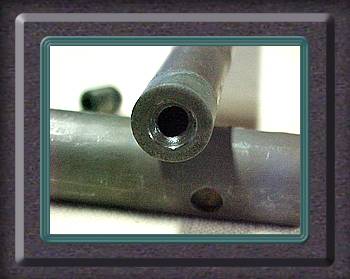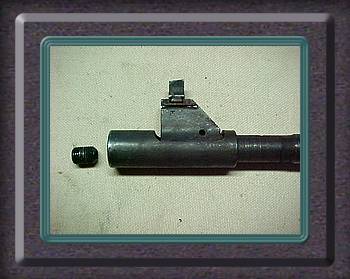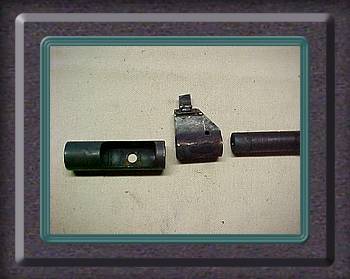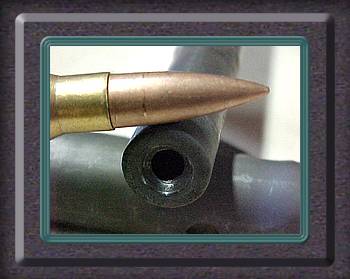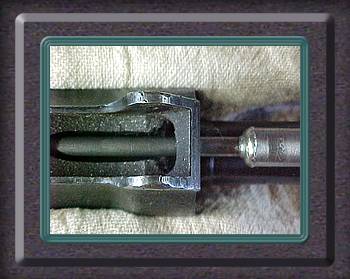|
|
On
this page you will see damage related to the improper method
used in blank adapting this G-43. Safely blank adapting a
rifle involves controlling the gas in two locations, the gas
piston and the muzzle. Threaded muzzle adaptors can be external
using a cap that screws on the front sight base, or internal
by installing a gas plug into the threaded end of a barrel.
The method being examined here was a combination of both.
An external adaptor was created to contain an internal gas
plug which was threaded into the end of the adaptor. This
resulted in the end of the barrel mushrooming creating an
obstruction, making this rifle unsafe to fire live ammo.
|
|
This
barrel diameter was reduced to under 5mm as a result of the
gas plug mashing the end of the muzzle.
|
|
|
|
|
|
Here
you see the external adaptor and the internal gas plug as
it was installed on the barrel.
|
The
gas plug needed to be installed tightly to hold the adaptor
securely on the end of the barrel.
|
|
|
|
|
You
can see that the barrel diameter was reduced creating an unsafe
condition. This barrel was recrowned to the proper dimensions.
|
Gas
pressure at the piston was uncontrolled causing excessive
wear and tear on the gas rod and all internal parts including
the receiver.
|
From
these examples you can see that blank adapting a rifle is serious
business. If not done properly, the gas pressures can eventually
destroy the rifle or injure someone during an event. When we receive
a rifle from a customer, these unsafe conditions are found and corrected.
The proper method of controlling gas at the piston first, and then
the muzzle is used to create a rifle that fires well with blanks
and live ammo.
See
page 3
|

